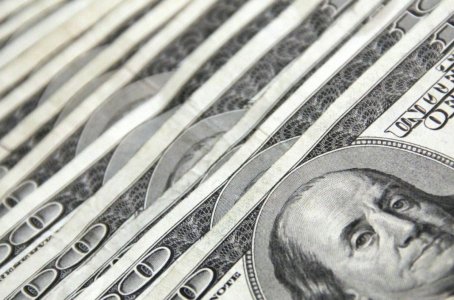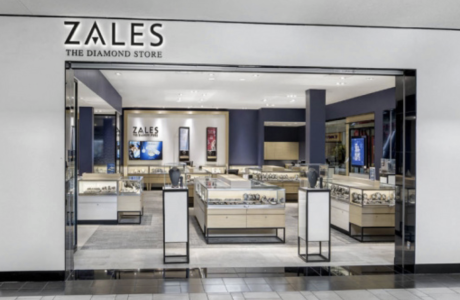You may be eligible for up to $100 from this settlement—no receipts or texts required
By
Veronica E.
- Replies 0
If you’ve ever received a marketing text from a company you didn’t remember giving your number to, you’re not alone.
And in this case, it could actually mean you’re owed a little money.
A recent class action lawsuit involving the jewelry retailer Zales has led to a proposed $7.54 million settlement.
The company was accused of sending unwanted marketing texts to consumers who were already registered on the National Do Not Call Registry.
If you’re eligible, you could receive up to $100—without needing to dig through old messages or provide any proof.

Zales, known for its rings, necklaces, and other fine jewelry, was sued for allegedly sending multiple marketing messages to people who had not provided their phone number and were listed on the National Do Not Call Registry.
These texts, according to the lawsuit, violated the Telephone Consumer Protection Act (TCPA), which restricts businesses from contacting individuals without prior consent.
While Zales denies any wrongdoing, the company has agreed to settle the case, allowing eligible individuals to file claims for compensation.
You could be eligible for a payment of up to $100 if you meet the following conditions:
There’s no requirement to show phone records or screenshots.
The final payout will depend on how many people file valid claims, with a maximum of $100 per person.
Class action lawsuits allow a group of people—known as the “class”—to bring legal claims against a company over the same issue.
These suits often involve privacy breaches, spam messages, false advertising, or financial missteps.
Most companies settle these cases without admitting fault to avoid a lengthy trial.
By agreeing to a settlement, the company pays a set amount that is divided among eligible individuals who file a claim.
In doing so, class members usually waive their right to sue the company again for the same issue.

The Do Not Call Registry was created to give individuals more control over their digital privacy.
When companies send marketing messages without permission, it’s not just irritating—it can be a legal violation.
This settlement is a reminder that consumers have rights and that companies must be held accountable when they cross the line.
It also shows that even small annoyances—like an unwanted text—can result in meaningful action and compensation.
Filing a claim is fairly simple:
This is just one of several recent cases where consumers have received compensation for digital privacy violations.
In a separate case, Generations Federal Credit Union agreed to a settlement following a 2022 data breach that exposed customers’ Social Security numbers and account information.
Affected individuals were offered up to $5,000 in compensation and two years of free credit monitoring.
These types of settlements are becoming more common as individuals push for better data protection and transparency from the companies they interact with.
Digital privacy violations are no longer just a nuisance—they’re taken seriously in courtrooms, and consumers are increasingly winning.
If you think you qualify for the Zales settlement, now’s the time to file.
These claims don’t come around often, and they’re one way to remind companies that consumers are paying attention.
Read next: Did you buy snacks from a vending machine? You could claim up to $360—no proof needed!

Have you ever received a marketing message even though your number was on the Do Not Call list? Did you know these types of messages might qualify you for cash compensation? We’d love to hear your experience or tips for navigating class action settlements—feel free to share in the comments below.
And in this case, it could actually mean you’re owed a little money.
A recent class action lawsuit involving the jewelry retailer Zales has led to a proposed $7.54 million settlement.
The company was accused of sending unwanted marketing texts to consumers who were already registered on the National Do Not Call Registry.
If you’re eligible, you could receive up to $100—without needing to dig through old messages or provide any proof.

You may qualify for compensation if you received unsolicited marketing texts from Zales. Image source: Pexels / John Guccione www.advergroup.com.
What the Zales settlement is about
Zales, known for its rings, necklaces, and other fine jewelry, was sued for allegedly sending multiple marketing messages to people who had not provided their phone number and were listed on the National Do Not Call Registry.
These texts, according to the lawsuit, violated the Telephone Consumer Protection Act (TCPA), which restricts businesses from contacting individuals without prior consent.
While Zales denies any wrongdoing, the company has agreed to settle the case, allowing eligible individuals to file claims for compensation.
Also read: Could you be owed part of a $4.25 million settlement? Here’s how to claim up to $5,000 before October 30
Who qualifies for a payout?
You could be eligible for a payment of up to $100 if you meet the following conditions:
- You received more than one marketing text from Zales within a 12-month span.
- You were on the National Do Not Call Registry for at least 30 days before those texts were sent.
- You did not give your phone number directly to Zales or its parent company, Zale Delaware.
There’s no requirement to show phone records or screenshots.
The final payout will depend on how many people file valid claims, with a maximum of $100 per person.
Also read: Grocery shoppers may be eligible for cash from a new settlement
How class action settlements work
Class action lawsuits allow a group of people—known as the “class”—to bring legal claims against a company over the same issue.
These suits often involve privacy breaches, spam messages, false advertising, or financial missteps.
Most companies settle these cases without admitting fault to avoid a lengthy trial.
By agreeing to a settlement, the company pays a set amount that is divided among eligible individuals who file a claim.
In doing so, class members usually waive their right to sue the company again for the same issue.

Zales, known for its diamond and bridal jewelry, is at the center of a recent class action settlement over unwanted marketing texts. Image source: Zales.
Also read: You could be owed $5,000 in a major data breach settlement—here’s who qualifies
Why this matters for consumers
The Do Not Call Registry was created to give individuals more control over their digital privacy.
When companies send marketing messages without permission, it’s not just irritating—it can be a legal violation.
This settlement is a reminder that consumers have rights and that companies must be held accountable when they cross the line.
It also shows that even small annoyances—like an unwanted text—can result in meaningful action and compensation.
Also read: Your Facebook payout is finally here—did you get your share of the $725 million settlement?
How to claim your money
Filing a claim is fairly simple:
- Determine if you're eligible. If you were on the Do Not Call Registry and received more than one unsolicited text from Zales without providing your number, you likely qualify.
- Visit the official settlement site. Always confirm that the website is legitimate—scammers sometimes create fake settlement sites to collect personal data.
- Complete the claim form. You’ll enter your contact information and check a box confirming your eligibility. No receipts, screenshots, or documentation are required.
- Select your payment method. Once the settlement is approved and finalized, you’ll receive your payout by check or direct deposit.
Also read: Check now: You could still claim cash from these settlements before the August deadline
Other privacy settlements you should know about
This is just one of several recent cases where consumers have received compensation for digital privacy violations.
In a separate case, Generations Federal Credit Union agreed to a settlement following a 2022 data breach that exposed customers’ Social Security numbers and account information.
Affected individuals were offered up to $5,000 in compensation and two years of free credit monitoring.
These types of settlements are becoming more common as individuals push for better data protection and transparency from the companies they interact with.
Final thoughts
Digital privacy violations are no longer just a nuisance—they’re taken seriously in courtrooms, and consumers are increasingly winning.
If you think you qualify for the Zales settlement, now’s the time to file.
These claims don’t come around often, and they’re one way to remind companies that consumers are paying attention.
Read next: Did you buy snacks from a vending machine? You could claim up to $360—no proof needed!
Key Takeaways
- Zales agreed to a $7.54 million settlement after being accused of sending unsolicited marketing texts to people on the National Do Not Call Registry.
- Eligible individuals may receive up to $100 without needing to submit proof such as texts or receipts.
- To qualify, claimants must not have provided their phone number to Zales, must have received multiple texts within 12 months, and must have been on the registry for at least 30 days beforehand.
- This case reflects a broader trend of class action settlements addressing digital privacy concerns, including a recent data breach case involving Generations Federal Credit Union.
Have you ever received a marketing message even though your number was on the Do Not Call list? Did you know these types of messages might qualify you for cash compensation? We’d love to hear your experience or tips for navigating class action settlements—feel free to share in the comments below.






